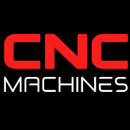The Benefits of Integrating AI into CNC Machining

The Benefits of Integrating AI into CNC Machining
The integration of artificial intelligence (AI) into CNC (Computer Numerical Control) machining is revolutionizing the manufacturing landscape. As industries strive for enhanced efficiency, reduced production costs, and improved quality, AI technologies are stepping in to optimize CNC processes. This article explores the various ways AI enhances CNC machining, detailing its benefits for manufacturers.
1. Enhanced Precision and Quality Control
A. Predictive Maintenance
One of the most significant advantages of integrating AI into CNC machining is its ability to predict equipment failures before they occur. By analyzing historical data and real-time sensor inputs, AI can identify patterns that indicate potential breakdowns.
- Benefits: Predictive maintenance reduces unplanned downtime, ensuring that machines run at optimal performance levels and producing high-quality components consistently.
B. Real-Time Monitoring and Adjustment
AI systems can monitor machining processes in real time, analyzing variables such as temperature, vibration, and tool wear. This allows for immediate adjustments to maintain precision.
- Benefits: By continuously optimizing the machining process, AI can enhance product quality and reduce scrap rates, ultimately leading to better overall performance.
2. Improved Efficiency
A. Optimized Tool Paths
AI algorithms can analyze various machining scenarios and determine the most efficient tool paths for CNC machines. By optimizing tool movements and minimizing unnecessary transitions, AI can significantly reduce cycle times.
- Benefits: Shorter machining times lead to increased productivity and allow manufacturers to fulfill more orders in a shorter period.
B. Adaptive Machining
AI enables adaptive machining, where CNC machines can adjust parameters such as feed rates and speeds based on real-time conditions. For instance, if a machine detects a change in material properties, it can modify its operations accordingly.
- Benefits: This adaptability ensures that machining processes are always optimized, leading to higher efficiency and better utilization of resources.
3. Cost Reduction
A. Reduced Labor Costs
Integrating AI into CNC machining can help reduce the need for skilled labor. With AI handling complex calculations and adjustments, operators can focus on overseeing processes rather than performing manual tasks.
- Benefits: This reduction in reliance on skilled labor can lower labor costs and alleviate workforce shortages in the industry.
B. Material Savings
AI-driven processes can minimize material waste through better planning and execution. By accurately predicting the optimal amount of material required and adjusting parameters dynamically, AI helps reduce excess material usage.
- Benefits: Lower material costs contribute to overall production savings, enhancing the profitability of manufacturing operations.
4. Enhanced Decision-Making
A. Data-Driven Insights
AI technologies can analyze vast amounts of data generated during CNC machining processes, providing valuable insights that can inform decision-making. These insights can help identify trends, inefficiencies, and areas for improvement.
- Benefits: Data-driven decision-making enhances operational strategies, leading to better resource allocation and improved production planning.
B. Predictive Analytics for Demand Forecasting
AI can be used to forecast demand trends based on historical data, market conditions, and customer behavior. This predictive capability allows manufacturers to optimize inventory and production schedules.
- Benefits: Improved demand forecasting reduces overproduction and stockouts, helping manufacturers better align production with market needs.
5. Streamlined Programming and Setup
A. Automated CNC Programming
AI can assist in automating CNC programming, converting CAD designs into machine instructions with minimal human intervention. This technology allows for faster setup times and easier adjustments to production runs.
- Benefits: Reduced programming time accelerates the production process, allowing for quicker response to customer orders.
B. Simplified User Interfaces
AI can enhance user interfaces for CNC machines, making them more intuitive and user-friendly. Machine learning algorithms can adapt interfaces based on user behavior and preferences, reducing training time for new operators.
- Benefits: Improved usability increases operator efficiency and minimizes the likelihood of errors during operation.
Conclusion
Integrating AI into CNC machining presents numerous benefits that can significantly enhance manufacturing processes. From improved precision and quality control to increased efficiency and cost reduction, AI is transforming the way fabrication businesses operate.
As the manufacturing landscape continues to evolve, embracing AI technologies will be crucial for companies looking to remain competitive and responsive to market demands. By leveraging the power of AI, manufacturers can streamline operations, reduce costs, and ultimately deliver higher-quality products to their customers. The future of CNC machining is undoubtedly intertwined with the advancements in artificial intelligence, paving the way for smarter, more efficient manufacturing processes.


